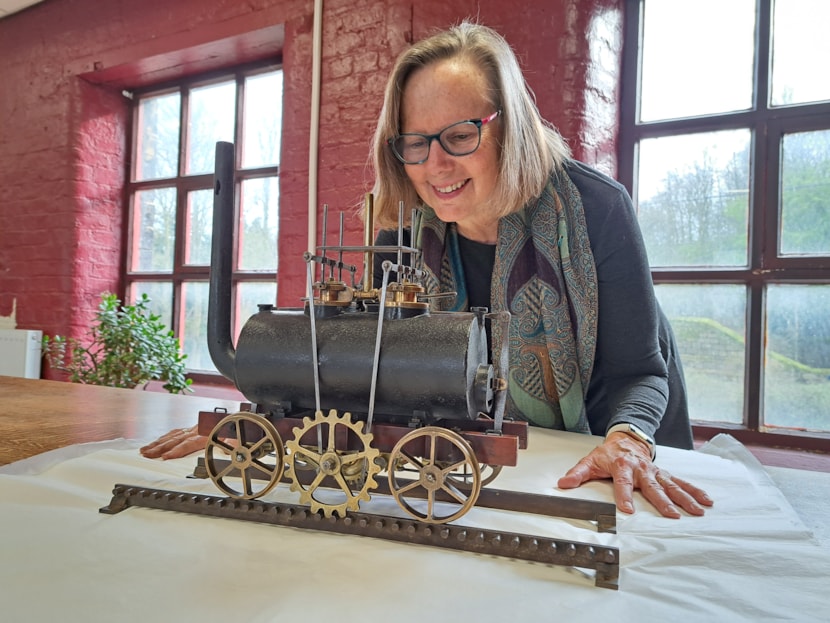
15 Apr 2024
Epic transatlantic journey to rediscover historic blast from the past
The American ancestor of a 19th century railway worker has rediscovered a fascinating family connection to a dramatic Leeds explosion with the help of the world’s oldest model locomotive.
Lisa Roger journeyed more than 5,000 miles from her home in Phoenix, Arizona to Leeds Industrial Museum to see the attraction’s remarkably detailed model of Salamanca, made by the city’s famed engineer Matthew Murray.
The model, made in 1811, already has its own place in railway history, being the oldest of its kind anywhere in the world and a replica of Murray’s very first commercially viable steam locomotive. At least two others were made, with one being gifted by Murray to the Grand Duke Nicholas of Russia when he visited Leeds in 1817.
But for Lisa, the model has a special connection to her heritage too, after her research discovered her third great grandfather George Hirst worked as a rope haulage brake operator on the fateful day its full-sized counterpart exploded in Middleton, Leeds more than two centuries ago.
She said: “I come from a long line of George Hirsts, and I still remember as a child my dad telling me that the Hirst men have been in engineering for a long time, so when I started researching my family history, I thought I might find something with that link.
“But I certainly never expected to discover something so dramatic.”
Detailed records and newspaper reports from the time reveal that on the afternoon of February 28, 1818, Salamanca had been transporting coals on the railway near Middleton.
Witnesses at the scene reported seeing steam issuing from the joints of the engine’s boiler, suggesting higher levels of pressure than usual. A short time later, the boiler erupted in a huge explosion, which sadly killed the engineer George Hutchinson.
A newspaper article reporting from his inquest the following week said: “The steam-propelled engine employed to convey coals on the railway of the colliery of J.C Brandling Esq near to this town burst with a most tremendous explosion, and we lament to add that the engineer was blown to pieces.”
Lisa’s research revealed that her ancestor George had been operating the stationary engine brake at the top of a nearby incline that day, and he had corroborated the accounts of other witnesses.
The explosion was so shocking, that a Parliamentary committee was also later convened, where famous railway pioneer George Stephenson suggested the driver may have tampered with the engine’s safety valve.
Up to that point, Salamanca and her sister engines had revolutionised the transport of coal, proving a massive commercial hit, with each engine selling for £350.
Murray would have used the model version to explain to investors how his engines would work and when Lisa found out that the museum was home to such a remarkably detailed recreation, she set out on a transatlantic trip to see it for herself.
She added: “It’s been incredible to find out more about my family’s connections to Yorkshire and to visit some of the places linked to them.
“But to see this model up close, which is a recreation of a part of my family history, and which was made around the same time my great, great grandfather was here in Leeds, it’s just so epic.”
Once the world’s largest woollen mill, today Leeds Industrial Museum is home to a huge array of models and machinery paying tribute to the city’s industrial heritage and as well as its many brilliant inventors and engineers.
Councillor Jonathan Pryor, Leeds City Council’s deputy leader and executive member for economy, culture and education, said: “The history of Leeds is filled with so many extraordinary stories and inventions which have made a lasting impact on the city.
“It’s always amazing to hear how those stories have also influenced and inspired people across the world and how much Leeds and its unique heritage has a truly global legacy.”
For more information on Leeds Industrial Museum, please visit: Leeds Industrial Museum - Leeds Museums & Galleries
ENDS
For media enquiries contact:
Leeds City Council Communications team
communicationsteam@leeds.gov.uk